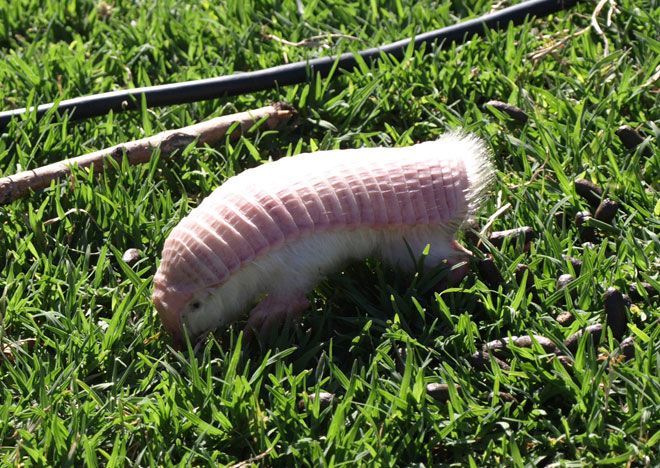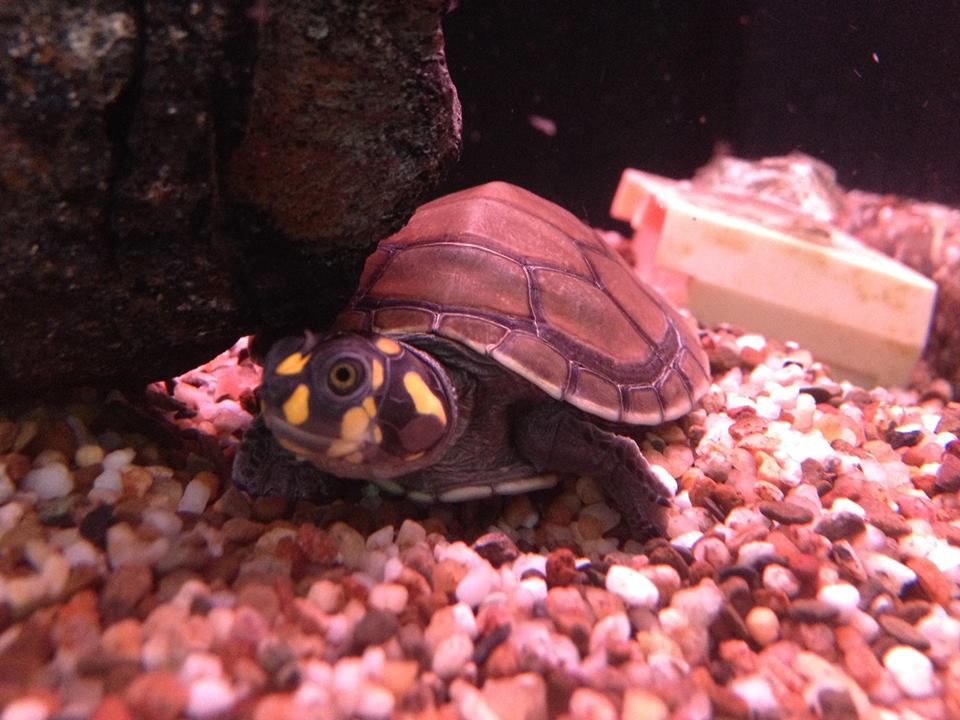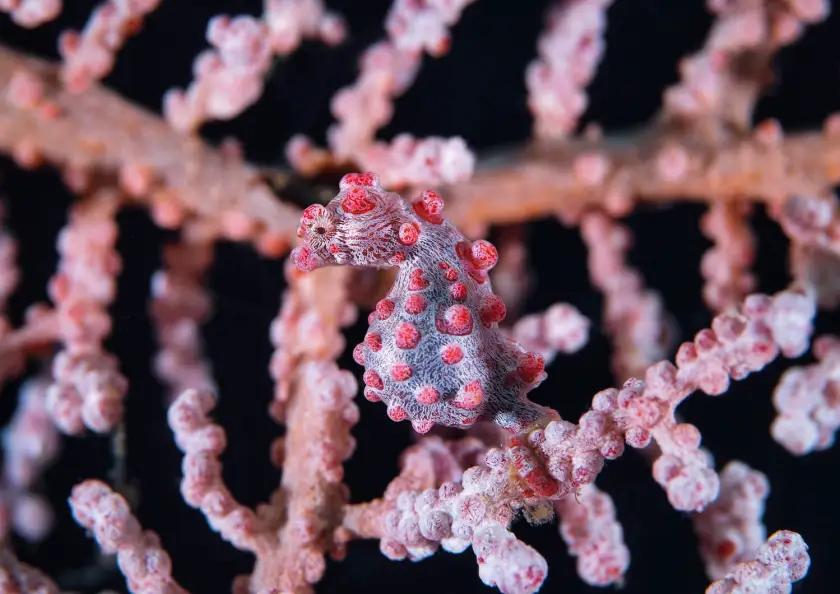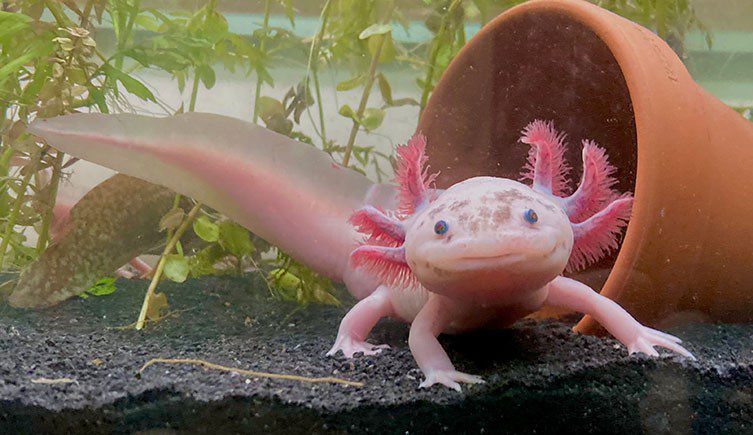Welcome to BungeeCity.com, where we dive into the enchanting world of animals that flaunt a lovely shade of pink! Prepare to be amazed as we take you on a whimsical journey through the kingdom of 12 lovely pink animals, complete with captivating pictures that will make your heart skip a beat. From iconic pink birds to tiny coral dwellers, these creatures are not only visually stunning but also hold fascinating secrets that will leave you in awe. So, grab your pink binoculars and get ready to meet the pink dolphins of the Amazon, the resilient pink pigeons of Mauritius, and even the regenerating pink axolotls. Join us as we uncover the vibrant, the quirky, and the downright adorable side of these pink wonders. Without further ado, let’s dive in and explore the fascinating world of these 12 lovely pink animals!
1. Flamingos: The Iconic Pink Birds

flamingo
Embarking on the journey of exploring the world of pink animals, we first encounter the flamingos—an embodiment of grace and vibrancy. Hailing from diverse corners of our planet, including parts of Africa, Asia, the Americas, and Europe, these creatures paint a vivid picture with their flamboyant pink plumage, elongated, slender legs, and beautifully curved necks. They are a testament to nature’s penchant for creating art in the wild.
So, what gives flamingos their distinctive hue? The secret lies in their diet. These birds feast on algae and crustaceans rich in beta-carotene—a red-orange pigment that lends them their mesmerizing pink coloration. Thus, the striking pink of a flamingo is not merely a visual delight but also a testament to its unique dietary habits.
Flamingos at a Glance
| Scientific Name | Phoeniconaias spp., Phoenicoparrus spp. |
|---|---|
| Type of Animal | Bird |
| Native Regions | Parts of South America, the Caribbean, Southern Europe, Africa, and Southwest Asia |
| Diet | Algae and crustaceans |
Apart from their vibrant appearance, flamingos are known for their sociable nature. These birds are often found in large colonies, performing synchronized dances that are a spectacle to behold. Imagine a sea of pink, moving rhythmically to a silent beat—this is the allure of the flamingo dance.
More than just beautiful creatures, flamingos also play an important ecological role. They are regulators of nutrient cycles in their habitats, contributing to the health of their ecosystems. Whether it’s their iconic pink hue, their mesmerizing dances, or their role in preserving their habitats, flamingos encapsulate the spirit of our pink-themed journey.
As we continue delving into the pink wonders of the natural world, let us immerse ourselves in the stories of these unique creatures. From the depths of the Amazon to the burrows of the desert, our journey is filled with surprises. So, stay tuned as we uncover the wonders of the pink dolphins, the next marvel on our list.
2. Pink Dolphins: The Amazon’s Aquatic Marvels

pink dolphin
As we drift from the sun-drenched flamingo habitats and immerse ourselves in the rippling waters of the Amazon and Orinoco river basins of Northern South America, an unexpected burst of pink breaks the surface. Here, in these freshwater realms, we encounter the enchanting Amazon River Dolphin, also known as the Pink River Dolphin or Boto.
The Amazon River Dolphin’s hue, a captivating pink, is a far cry from the typical grayish-blue that we usually associate with dolphins. But what makes this pink coloration even more fascinating is its origin. Unlike most animals where color is a consequence of pigmentation, these dolphins owe their distinctive color to the blood vessels close to their skin. The color intensifies with age or excitement, making each dolphin a unique spectacle.
These freshwater dolphins, found in the Amazon and Orinoco river basins of Northern South America, owe their distinctive pink color to the blood vessels close to their skin.
But, the beauty of the Pink Dolphins is more than skin deep. They are highly intelligent creatures, boasting complex social structures that rival those of primates. Their intelligence is matched by their agility in the water – an adaptation to their riverine environment. How do they manage this exceptional maneuverability, you ask? The secret lies in their unfused neck vertebrae, a feature not found in other dolphin species. This anatomical trait allows them to navigate the complex, often flooded forest environments with ease and grace.
Read more: Male Tiger vs. Female Tiger: Unmasking the Secrets of Telling Them Apart
As apex predators, their role in their ecosystem is crucial. They help maintain balance by preying on a variety of species, thus indirectly controlling the population of other creatures in their habitat. Their existence, therefore, is vital for a healthy ecosystem.
Our journey into the pink corners of our natural world doesn’t stop here. As we leave the playful splashes of the Pink Dolphins behind, we prepare to burrow into the lives of the elusive Pink Fairy Armadillos. Stay tuned as we continue our exploration.
3. Pink Fairy Armadillos: The Tiny Burrowers

pink fairy armadillo
Enveloped in the vast landscapes of Argentina, a small creature creates its own remarkable world beneath the surface. This is none other than the charismatic Pink Fairy Armadillo, the tiniest member of the armadillo family. As its name suggests, this animal is a tiny marvel with a unique pinkish hue, a feature that immediately sets it apart from its relatives.
The rosy color of the Pink Fairy Armadillo is not just a pleasing aesthetic. It’s a result of their skin being suffused with blood vessels, lying just beneath the surface, offering them an enchanting pink glow. This intriguing coloration, coupled with their small size, gives them an almost mythical appearance, like tiny fairies frolicking in the underbrush.
Their compact bodies, however, are not just for show. Pink Fairy Armadillos are equipped with large, formidable claws, a testament to their primary lifestyle as proficient diggers. These claws, perfect for efficient excavation, help them create extensive burrows and escape from predators.
The diet of these tiny burrowers primarily consists of insects and plant matter, but they are not just eaters in their ecosystem; they are caretakers too. By controlling insect populations, they prevent outbreaks and maintain a healthy balance. Furthermore, their digging activity serves to aerate the soil, promoting the health and sustainability of the plant life around them.
Despite their minuscule size, Pink Fairy Armadillos play a significant role in their environment, reminding us that every creature, no matter how small, contributes to the vibrancy and balance of nature. As we continue our journey through the pink wonders of the natural world, let us remember the Pink Fairy Armadillo, the tiny burrower with a big impact.
4. Pink Orchid Mantises: Masters of Camouflage
Imagine a creature so perfectly adapted to its environment that it becomes indistinguishable from the flora surrounding it. Enter the mesmerizing world of the Pink Orchid Mantis. Native to the verdant rainforests of Southeast Asia, these extraordinary insects are not only a feast for the eyes but also a fascinating example of nature’s ingenuity.
Decked in hues of bright pink or pristine white, their bodies are further adorned with petal-like appendages, a remarkable adaptation that enables them to blend effortlessly into their floral surroundings. This intricate mimicry is not merely a defensive strategy but a cleverly designed offensive tactic as well.
“The Orchid Mantis, with its petal-like limbs and bright coloration, is a master of deception. Its unique appearance allows it to blend seamlessly among orchids and other tropical flowers, serving a dual purpose— to hide from predators and to hunt prey.”
Unsuspecting insects, lured in by the enchanting ‘flower,’ quickly find themselves caught in the deadly grasp of this carnivorous predator. The Pink Orchid Mantis, with its spiny front legs, is a formidable hunter despite its delicate appearance.
However, its mastery extends beyond mere physical resemblance. The Orchid Mantis emulates not just the visual aesthetics of a flower, but also its behavior, swaying gently like a blossom in the breeze, further enhancing the illusion.
So, next time you admire a beautiful orchid in a Southeast Asian rainforest, take a moment to observe. What appears to be a flower could very well be one of nature’s most captivating predators – the Pink Orchid Mantis.
5. Pink Nudibranchs: The Vibrant Sea Slugs
Imagine a world underwater, where the vast blue is interrupted by a sudden splash of vibrant pink. This is the world of the Pink Nudibranchs, the ornate sea slugs that grace the oceans worldwide. Their unique pink hue is not a mere aesthetic feature but a result of pigments in their skin, a fascinating adaptation that adds charm to their underwater environment.
These marine marvels, varying in shapes and sizes, are a testament to the diversity and beauty of life beneath the waves. Pink Nudibranchs, despite their soft-bodied, delicate appearance, play a gritty and essential role in maintaining the balance of their marine ecosystems. They help control the population of other sea organisms, acting as natural regulators in the vast oceans they inhabit.
Check out: How Fast Can a Cheetah Run? Unveiling the Secrets Behind Its Incredible Speed
What makes these creatures even more remarkable is their adaptability. They have carved out a niche for themselves in the dynamic and often harsh underwater world, showcasing the resilience and tenacity of nature. Their presence serves as a reminder of the delicate balance that exists within our planet’s ecosystems and the role each creature, no matter how small or seemingly insignificant, plays in maintaining this balance.
Witnessing a Pink Nudibranch in its natural habitat is a sight to behold. Their vibrant colors make them stand out amidst the oceanic blue, a beacon of life and color in the vast underwater expanse. They truly are the vibrant sea slugs, their pink hue a symbol of the splendor and diversity of life beneath the sea.
6. Pink Pigeons: The Resilient Birds of Mauritius
As we journey from the depths of the world’s oceans, leaving behind the vibrant Pink Nudibranchs, we arrive at the lush, green forests of Mauritius. Here, we encounter a splendid avian creature that stands as a beacon of resilience and survival – the Pink Pigeon.
With a scientific name of Nesoenas mayeri, the Pink Pigeon is a unique bird species that has adapted to forest life. Unlike their urban cousins, these birds showcase a delightful blend of colors. The primary body is brown, but a charming pinkish hue graces their tail, wings, and beak, creating a visually pleasing contrast.
The Pink Pigeon’s diet consists mainly of leaves, fruits, flowers, and buds, making them integral to seed dispersal, thereby aiding in the rejuvenation and growth of their forest habitats. They are social creatures, often found in small groups, their soft cooing sounds adding a serene melody to the forest symphony.
“Once on the brink of extinction, with numbers as low as ten individuals in the wild, the Pink Pigeon has made a significant recovery thanks to intensive conservation efforts.”
However, their journey has not been without challenges. The Pink Pigeons were once teetering on the edge of oblivion. Their numbers reduced drastically, reaching a frighteningly low count of just ten individuals in the wild. But, thanks to intensive conservation efforts, these pink-hued birds have made a remarkable recovery. They are a testament to the power of conservation and the resilience of nature.
Despite this significant recovery, they continue to face threats and remain endangered. Their story serves as a stark reminder of our responsibility to protect and conserve these unique creatures and their habitats. So, as we marvel at the pink-tinted beauty of these birds, let’s also remember the crucial role we play in ensuring their .
7. Pink Iguanas: The Unique Reptiles of the Galapagos
In the heart of the Pacific Ocean, on the rugged, volcanic landscapes of the Galapagos Islands, resides a creature that is as enchanting as it is elusive. Enter the Pink Iguanas, a unique species of reptiles that add a vibrant splash of pink to the otherwise stark and earthly tones of their volcanic habitat.
Unlike their green cousins, these Pink Iguanas, scientifically known as Conolophus marthae, are a testament to the power of genetic mutation. Their striking pinkish hue, a rare spectacle in the realm of reptiles, sets them apart from the crowd. This fascinating coloration is the result of a unique genetic mutation that has evolved over millions of years, adding another layer of intrigue to the biodiversity of the Galapagos Islands.
These beautiful creatures are endemic to the Galapagos, meaning they are found nowhere else in the world. Their existence is confined to the northernmost island of the archipelago, Wolf Volcano. This exclusive geographical distribution contributes to their vulnerability and the urgent need for their conservation.
Despite the charm of their pink scales, they face significant threats from invasive species. Non-native animals, introduced either intentionally or accidentally by humans, pose a grave risk to their survival. These invasive species compete with the Pink Iguanas for food and territory, adding pressure to an already fragile existence.
As we marvel at the beauty of these unique creatures, let’s not forget the importance of biodiversity and the role each species plays in maintaining the balance of our ecosystems. The story of the Pink Iguanas underscores the urgency of conservation efforts and the need to protect our planet’s unique and diverse wildlife.
As we journey from the captivating Pink Iguanas of the Galapagos, let’s dive into the world of another enchanting pink species that calls the freshwater bodies of South America home. Stay tuned as we unveil the saga of the Pink River Turtles in our next section.
8. Pink River Turtles: The Freshwater Guardians

pink river turtle
Imagine for a moment, you’re embarking on a journey down the meandering rivers of South America. As you navigate the lush, verdant banks, a splash of pink catches your eye. It’s not a flamingo, nor a flower, but a Pink River Turtle. Found in the diverse freshwater habitats of this region, these turtles are a testament to nature’s palette, boasting not only a pink skin but also shells that mirror the rosy hue.
Their striking coloration isn’t their only claim to fame. These freshwater guardians play a pivotal role in their ecosystems. As natural scavengers, they help in maintaining the health of their habitats by controlling the population of aquatic invertebrates. They act as natural recyclers, breaking down dead organisms and waste, thereby helping to recycle nutrients back into the ecosystem.
But their contribution doesn’t stop there. Pink River Turtles also serve as a food source for larger predators such as caimans and jaguars. Thus, they play a crucial role in the food web, contributing to the biodiversity and overall equilibrium of their habitats.
The existence of these fascinating creatures serves as a reminder of the vast array of life our planet holds. They are a testament to the rich tapestry of species that color our world, and the need to protect and conserve these irreplaceable treasures. As we continue our journey, let’s delve deeper into the world of other pink-hued species that are as captivating as they are vital to our planet’s biodiversity.
9. Pink Pygmy Seahorses: The Tiny Coral Dwellers

pygmy seahorse
As we continue our exploration of the fascinating world of pink creatures, we journey to the vibrant coral reefs of Southeast Asia. Here, we find the enchanting Pink Pygmy Seahorses, captivating residents of the underwater realm. These petite marvels, no larger than an inch, command attention not by their size but by their unique color and adaptability.
Their captivating pink hue is not just for show; it serves a vital purpose. Much like the Pink Iguanas and Pink River Turtles, the Pink Pygmy Seahorses have evolved to use their color to their advantage. Their charming pink shade enables them to blend seamlessly with the coral fans they inhabit, providing a perfect disguise from predators and helping them in their hunt for tiny crustaceans, their preferred meal.
Despite their small stature, these tiny seahorses have a significant role to play in the ecosystem of the coral reefs. They feast on small crustaceans that drift their way, thereby maintaining a balance in the population of these aquatic invertebrates. In turn, their existence contributes to the overall health and biodiversity of the coral reefs.
Moreover, the Pink Pygmy Seahorses are not just survivors but thrive in their specific habitat. Their existence is tightly bound to the coral reefs they call home, and they depend heavily on specific types of coral for their survival. This intricate relationship between the seahorses and their coral homes offers a compelling narrative about the interconnectedness of life on our planet.
As we appreciate the delicate beauty of these pink seahorses, let’s also remember their significance. Their presence is a testament to the wonder of evolution, the balance of nature, and the critical need for conservation of our planet’s diverse marine life.
Stay with us as we continue our journey, discovering more of these incredible pink species that color our world in the most unexpected ways.
10. Galah Cockatoo: The Pink and Grey Marvels

galah cockatoo
Leaving the aquatic world of Pink River Turtles and Pygmy Seahorses behind, we now journey to the vast and varied landscapes of Australia, a continent known for its unique biodiversity. Within this rich tapestry of life, there exists a particular avian wonder that stands out – the Galah Cockatoo.
Known colloquially as the Rose-Breasted Cockatoo, this bird is a delightful combination of vibrant pink and subtle grey tones. The Galah Cockatoo’s striking pink chest and face form a stark contrast against its grey back and wings, creating an aesthetic that is as captivating as it is unique.
Its playful antics and distinctive appearance make it one of Australia’s most recognized birds.
However, this bird’s charm extends beyond its physical beauty. The Galah Cockatoo is highly social and intelligent, qualities that are often demonstrated in their interactions within their large, noisy flocks. With a diet consisting primarily of seeds, nuts, berries, and roots, these birds are as resourceful as they are colourful.
One of the most fascinating aspects of the Galah Cockatoo is their impressive aerial acrobatics. An adept flyer, this bird is known for its incredible manoeuvres in the sky, offering a spectacle for anyone lucky enough to witness it.
Like other parrots, Galahs form strong, lifelong bonds with their mates. They’re monogamous birds, a testament to their complex social structures and intimate relationships. These bonds are often demonstrated through mutual preening and shared nest duties, characteristics that further highlight their unique social dynamics.
Indeed, the Galah Cockatoo’s presence in Australia’s sky is a testament to the continent’s rich biodiversity and the integral role each species plays in maintaining the delicate balance of their ecosystems. The Galah Cockatoo, with its vibrant pink hue and lively personality, certainly adds a touch of colour and charm to Australia’s diverse wildlife.
11. Pink Sea Star: The Voracious Predator of the Pacific
As we delve into the mystical depths of the Pacific Ocean, we encounter a fascinating creature, the Pink Sea Star. It’s a sight to behold with its hues that oscillate between soft pink, deep purple, and occasionally, a rich orange or brown. This creature, also known as the Short-Spined Sea Star or the Pink Star, is a native of the Northeastern Pacific Ocean. It graces the coastal line that stretches from Alaska to California, adding a splash of color to the tidal pools and rocky shores.
Despite its enchanting appearance, the Pink Sea Star is a voracious predator. Its menu includes a variety of small invertebrates such as mussels, barnacles, and snails. This starfish doesn’t just eat to satisfy its hunger; it plays a crucial role in balancing the biodiversity of tidal ecosystems. By feeding on a wide range of species, it prevents any single species from dominating, thereby preserving the intricate, delicate balance of life beneath the ocean waves.
Astonishingly, these sea stars are not just survivors but regenerators. If a predator, say a gull or sea otter, manages to bite off one of its arms, the Pink Sea Star is capable of regrowing it, given time. This is a remarkable testament to the resilience of nature and the fascinating world of echinoderms.
The Pink Sea Star, with its vibrant color and fascinating lifestyle, reminds us of the incredible diversity hidden beneath the ocean’s surface. It serves as an indicator species, meaning changes in their populations often reflect changes in the health of wetland environments. Observing these beautiful creatures not only offers a glimpse into the complexity of aquatic ecosystems but underscores the importance of their conservation.
Snapshot: Pink Sea Star
- Scientific name: Pisaster brevispinus
- Type of animal: Echinoderm
- Where found: Northeastern Pacific Ocean
12. Pink Axolotl: The Fascinating Regenerator

pink axolotl
Our journey through the enchanting world of pink creatures takes an exciting turn as we delve into the ancient water systems of Xochimilco, near Mexico City. Here, we encounter the Pink Axolotl, a creature that not only captivates with its unique pink hue but also astonishes with its astounding regenerative abilities.
Also known as the ‘Mexican Walking Fish’, this intriguing creature, with its scientific name Ambystoma mexicanum, is not a fish, contrary to what its nickname suggests. Instead, this aquatic marvel is a species of amphibian that proudly showcases its distinct pink skin, contrasting beautifully with the fringed, feathery gills that adorn its head.
The Pink Axolotl’s appearance is truly captivating, but what sets it apart from other creatures is its almost supernatural ability to regrow parts of its body. This little miracle-worker can regrow entire limbs, its spinal cord, heart, and even parts of its brain, a feat unmatched in the animal kingdom.
This exceptional regenerative attribute has not just made the Pink Axolotl a subject of fascination among wildlife enthusiasts, but also a vital model organism in scientific research. Scientists are studying these fascinating creatures in their quest to understand and possibly replicate their regenerative abilities in humans.
However, while the Pink Axolotl continues to amaze us with its unique abilities, it’s worth noting that this extraordinary creature is, unfortunately, listed as critically endangered. Its only known natural habitat, the water systems of Xochimilco, is under threat due to urbanization and pollution, emphasizing the urgent need for conservation efforts.
As we continue to marvel at the diversity and resilience of these beautiful pink animals, let’s not forget our responsibility to protect and conserve them for future generations to appreciate and admire.
Some examples of pink animals include flamingos, pink dolphins, pink fairy armadillos, pink orchid mantises, pink nudibranchs, pink pigeons, pink iguanas, pink river turtles, pink pygmy seahorses, and the Amazon River Dolphin.
Flamingos get their pink color from the food they eat, which contains pigments called carotenoids.
Pink dolphins, also known as Amazon river dolphins, have a unique pink color due to the blood vessels close to their skin.
Pink pigeons play a crucial role in seed dispersal and aiding in the growth of their forest habitats. They were once on the brink of extinction but have made a significant recovery due to conservation efforts.

